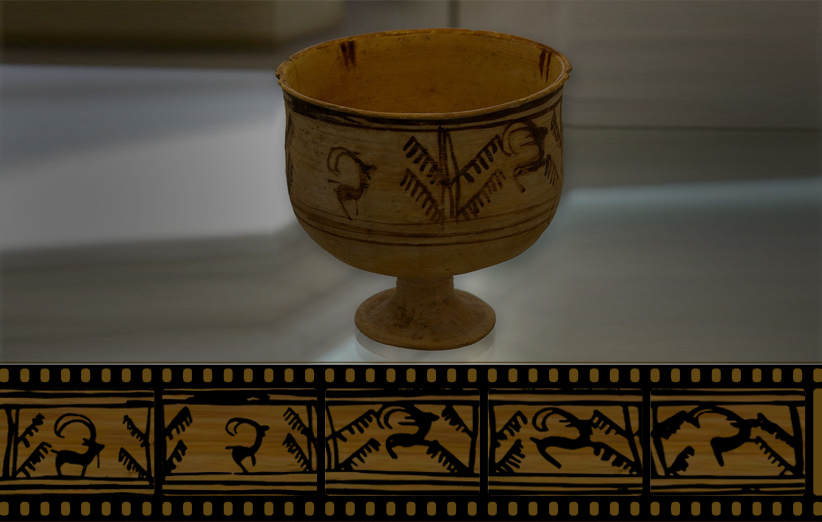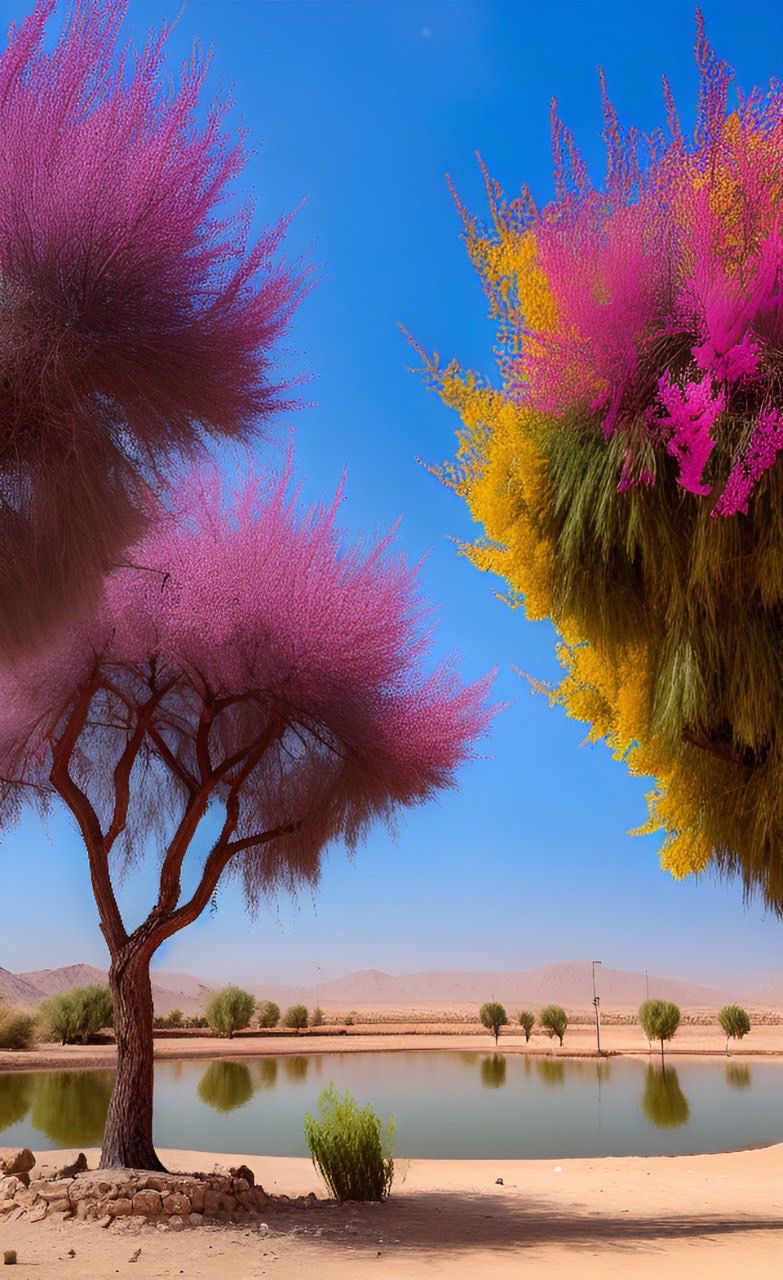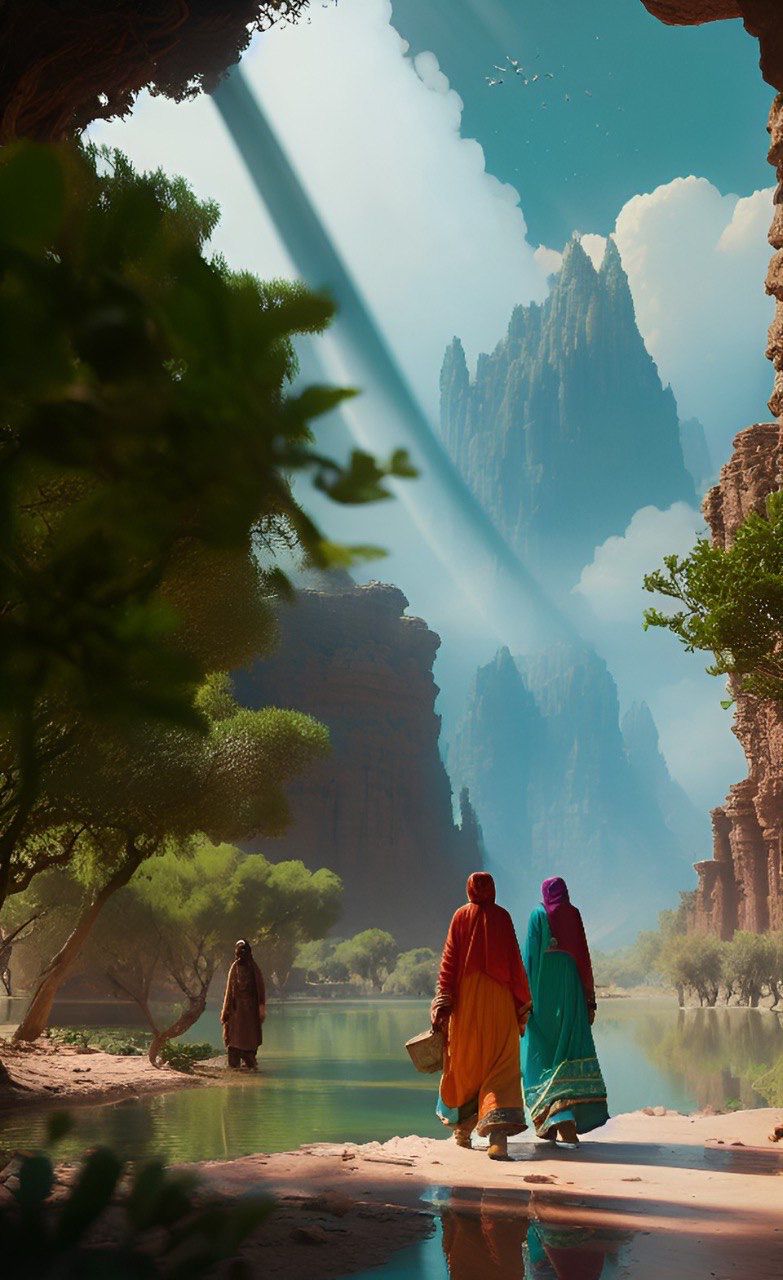The following is a post written by Negar Bagheri, a social activist who works with women, children, and migrants in Iran. She previously worked as a journalist, but was banned by the Iranian government from working. The piece was translated from Persian.
This post is part of the Persianate Futurism series, a collection of works which asks: What will the Persianate world look like 30 years in the future? It invites writers, artists, and readers to draw inspiration from the region’s unique collective past to imagine and construct novel future societies, economies, and cultures. See the full collection here.
***
We arrived in Sistan and Baluchistan yesterday, March 22, 2053. It’s a group of 10, all of us journalists from different cities across the Middle East. There’s a guy from Cairo, a woman from Haifa, two people from Gaza and many more…
Yesterday, we went to see the beginning of the Nowruz festivities. Last night, in the village beside our camp, they began the do-chapi dance, which lasts for seven days and nights. “Chapi” is a Balochi word meaning “clap;” the do-chapi is a group dance performed to local instruments like dohl and sorna as crowds clap to the rhythm.
Every night, wrestlers circle around the choldan firepit and wish for light and warmth for themselves, their families, their relatives and clans. In speeches before Nowruz crowds, they perform a mythical story for us, blending past, present, and future, and celebrating the bravery and sacrifices made by women and men against the enemies of freedom and peace in years past. They then describe the beauty of the homeland – no longer defined by geographical boundaries – and the beauty of spring. Every night, the Nowruz festivities close with do-chapi.
We’ve embarked on this Nowruz tour to understand the growing excitement among travelers to visit Sistan and Baluchistan. Three decades ago, the province was synonymous with drought, insecurity, sectarian tension, and gender discrimination. Today it is defined by the consonance between the region’s replenished nature, a celebration of the people’s ancient culture, and innovations inspired by new technologies.
In this region, the Nowruz ceremony – the beginning of the solar year and the first day of spring – is called Bahargah or Nokin Roch. People still celebrate Nowruz with the old traditions; as Sistan has advanced, they have brought their cultural heritage with them.
After breakfast, we head to Sistan’s city center. The center is full of spectacular skyscrapers with facades covered in solar panels resembling ayneh-kari, traditional Iranian mirror work.
Whereas the region’s dramatic heat once brought drought, today, these solar panels convert the endless energy of Sistan’s bright sun into clean fuel. This fuel powers the region’s transportation and manufacturing sector and keeps skies clean.
Developments in cloud seeding technology have led to the sprouting of artificial lakes and reservoirs across the Sistan and Baluchistan. These bodies of water cool different parts of the region and act as oases for public gatherings.
The second day of our trip in Sistan, we head to the famous “Burnt City.” Our departure time is 9:00 AM and we take a 20-minute train ride to the Burnt City Station, located 56 km south of Zabol.
Upon entering, the voice of the guide – an advanced humanoid robot that is a successor to the Surena prototype of 2019 – astonishes us as hologram projections of the reconstructed Burnt City dance before us:
“This place is one of the rare ancient cities where women were in charge of governance. Based on archaeologists’ findings, the Burnt City was a vast area with five residential areas, workshops, monuments and cemeteries in the form of grand hills.
“A new city has been built next to the ancient site in the last 20 years, using the same architectural style. Drawing on new technologies, the new city has returned the area to its green age – that is, how it was in 5,000 BCE – when this was a thriving city by the Helmand River.”
Our guide explains the story of the first human effort to make animation through 3D images: “Archaeologists, while exploring a five-thousand-year-old grave, found a cup with the image of a goat and a tree on it. After examining this object, they found that the engraving on the cup, unlike other works obtained around the Burnt City, is purposefully repeated, in such a way that it shows the movement of a goat towards a tree.”
“The artist who used the terracotta cup as his canvas was able to draw a goat in five movements that moves towards the tree and feeds on its leaves. By bringing these images closer to each other, the archaeologists managed to obtain an example of a moving image in the form of a 20-second film.”

Our excitement cannot be controlled when we hear the following explanations: “The discovery of the world’s first artificial eye, signs of the oldest brain surgery, and…”
In the evening, we are going to have a picnic by the Helmand River. We sit in a gazebo that is covered with palm mats as we begin to work on the newspaper edition we are planning. I am from Tehran, working alongside Jamal from Riyadh. Ibrahim from Sanaa is in the same group with Mikhail from Haifa and Maryam from Beirut. Hossein and Rania, one from Bahrain and the other from Cairo, form another group.
As we begin work, Jamal asks the group: Are there more tourists here or Dubai? We check the statistics and realize Sistan and Baluchistan ranks first in attracting tourists.
We dedicate the first page image to an interview with two women we met on our trip to Zabol and the Burnt City. Shahrbano’s daughter Asuke, meaning legend, is 30 years old. She is now Zabol’s mayor and was born precisely during the days when the great transformation of Sistan and Baluchistan and the region began. Shahrbano told us how she had participated in the demonstrations for the Women-Life-Freedom movement.
In the midst of the protests and clashes with the security forces, she had labor pains and difficulty reaching the hospital. For her, Asoke is a reminder of the struggle women faced. Asoke carried on this struggle and continues to work toward building a verdant utopia that can reflect the feminist beginnings of Zabul 5,000 years ago, and since.
Ahmed, a journalist living in Dubai, has traveled to this region several times before us. He writes about how, unlike Dubai and many Gulf cities, in Sistan and Baluchistan the cities were re-developed with a more thoughtful urbanist philosophy that took into consideration the rich cultural heritage and environment of their region. They did not try to copy New York, Dubai, or even Tehran.
Masoud, who has more editorial and journalistic experience than the rest of and is visiting from Erbil, reminds us that we have been sitting long enough in the gazebo. We better get to writing.
















